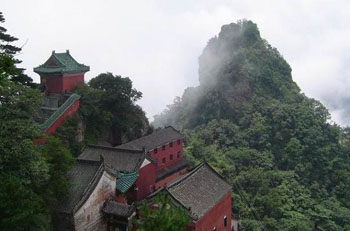search for a Trip
Located in the northwest of Hubei province, Wudangshan stretches 400 kilometers and covers an area of more than 30 square kilometers.
This mountainous area is best known as a Taoist sanctuary. As early as the East Han Dynasty (25-220AD), the mountain attracted the Emperor"s attention.
During the Tang Dynasty (618-907), the first site of worship - the Five Dragon Temple - was constructed. During the fifteenth century, the mountain reached its religious climax. Ming Dynasty emperors sent 300,000 soldiers and craftsmen to build as many as 160 temples, pavilions and other structures.


As a national park, Wudangshan boasts an impressive landscape and flourishing plant life. Li Shizhen, a Ming Dynasty pharmacologist, recorded more than 400 local species of plants with medical value in his Materia Medica.
The sacred mountain attracts visitors not only for its beautiful scenery, but also for the mysterious Wudangshan style of martial arts (wushu). The technique was developed by Zhang Sanfeng, a famous Ming Taoist. Several Wushu schools can be found in the town at the foot of the mountain.
The highest Wudang summit is the 1612m Tianzhu Peak, a name that translates as "Pillar Propping Up the Sky", or "Heavenly Pillar Peak". Noted temples include the Golden Hall, Nanyan Temple and the Purple Cloud Temple.
As the largest existing Taoist complex, these temples serve as fine examples of ancient Chinese architecture, and many of them house Taoist relics of high cultural and artistic value.
Related Tours:
China Attractions Guide
- Anhui Attractions
- Beijing Attractions
- Chongqing Attractions
- Fujian Attractions
- Gansu Attractions
- Guangdong Attractions
- Guangxi Attractions
- Guizhou Attractions
- Hainan Attractions
- Henan Attractions
- Hongkong Attractions
- Hubei Attractions
- Hunan Attractions
- Inner Mongolia Attractions
- Jiangsu Attractions
- Jiangxi Attractions
- Manchuria Attractions
- Ningxia Attractions
- Qinghai Attractions
- Shaanxi Attractions


